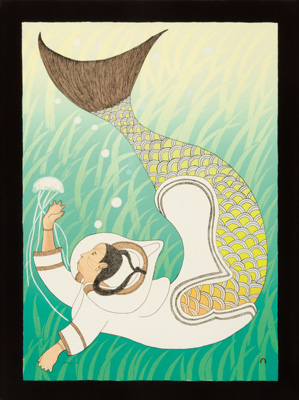#feministfriday episode 263 | Feathered, floating friends
Good morning everyone,
How are you doing? How was your week? However you answer that question I hope you are looking forward to spending some time together right now. Firstly, many thanks to everyone who was kind about my cool project and/or signal boosted it on the internet. Today is not about projects or modernist literature though! It's about seabirds.
This year, the best thing I saw at the proms was a part of Prom 71 – Stevie Wishart's piece The Last Dance?, a tribute to the hooded grebe of Argentina. Part of her piece was a sample of the incredible weird sound of this endangered seabird. The audience did not expect to hear samples (also the hooded grebe sounds incredibly weird) so there was a minor stir of people shifting in their seats and looking sideways at one another to check what was going on. My first thought was, why have one of the orchestra left their phone on sound, that's so embarrassing for them that their very odd ringtone is being amplified.
Unfortunately the piece itself is not online, but here's footage anyway of Stevie Wishart talking about the incredibly weird sound of the hurdy-gurdy:
https://www.youtube.com/watch?v=ve1xCDQG8KQ
Now we come to a favourite Fem Fri topic – mythology, and specifically the myth of Sedna the North Atlantic sea goddess. Sedna was a normal girl who staunchly refused marriage from a series of men in her village, but allowed herself to be whisked away by a mysterious masked man who promised her a better life. Unfortunately he was a fulmar in disguise and the life he could give her was not better! The rest of the story is pretty gruesome, you can read it at the below link and also enjoy this lovely rendering of Sedna by Ningeokuluk Teevee, Inuit artist.
www.polarlife.ca/traditional/myth/sedna.htm
Never trust a fulmar.
Back to women who definitely existed, how about Esther Cullen! She is the reason we know what kittiwake behaviours mean, having spent hours and hours observing them in the 1950s. She was at the forefront of a new science of animal behaviour:
In the 1920s, the behaviour of fish, birds and mammals, including humans, was still regarded as fluid and fleeting. An aggressive thrust, an intimidating stance on a territorial boundary or a seductive pose in a mating ceremony was seen but briefly, and a moment later had evanesced into a new behavioural pattern. By observing animals with infinite patience for sustained periods, behavioural biologists such as the British scientist Esther Cullen eventually established that this was a delusion.
http://www.paulienoltheten.nl/press/123-teetering-on-the-ledge-images-balanced-between-art-and-science-en
Finally, did you know that female puffins lay an egg that is 20% of their body weight? It's the equivalent of an 11st woman having a 30lb baby.

Female puffins are strong and beautiful and so are you.
Okay, bye-bye,
Alex.

